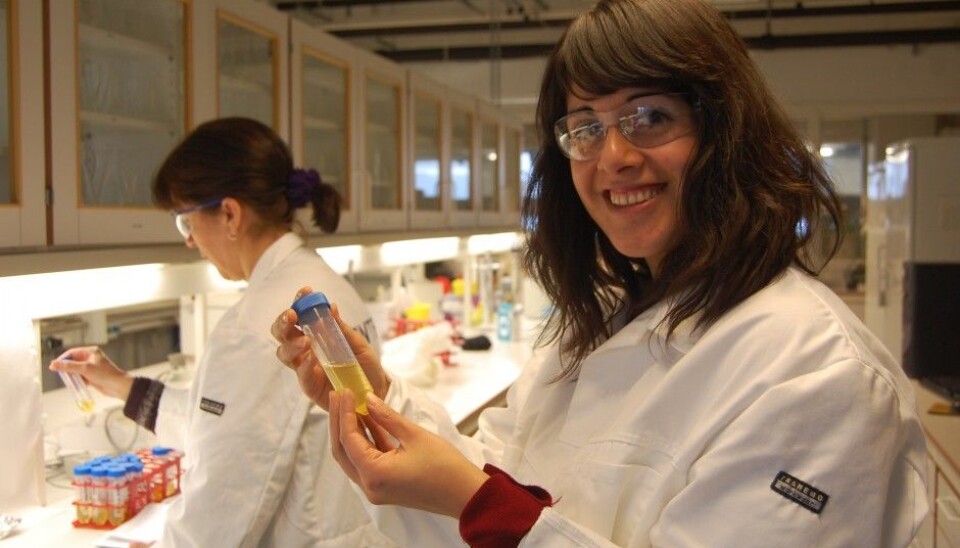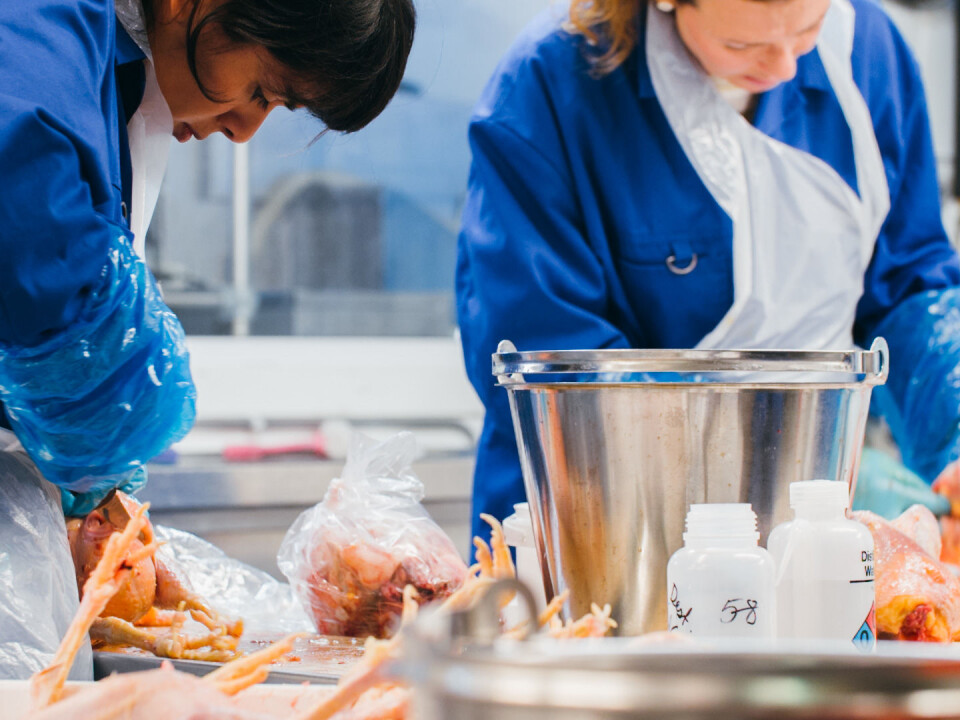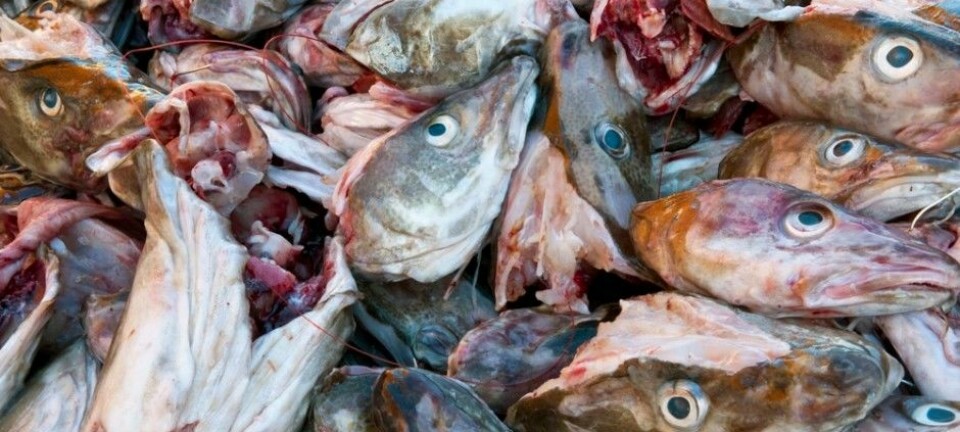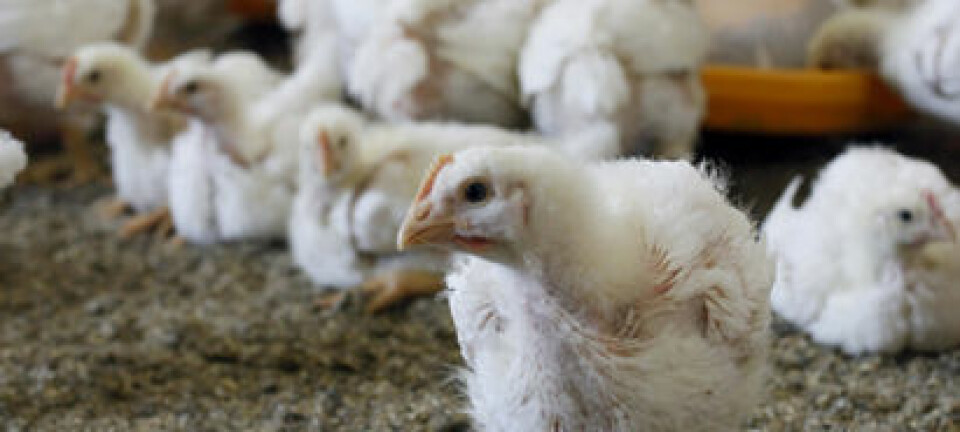
Making retired hens into more than a refuse problem
In Norway over three million retired laying hens are gassed to death and end up as refuse - anually. A group of Norwegian scientists want to put the hens to better use.
Research Manager Ana Carvajal works with the lipids from dead hens in a laboratory by the Trondheim Fjord in Mid-Norway. There’s the smell of chicken soup in the air, but her goal is to make an oil and protein supplement for animals as well as for humans.
The SINTEF researcher hopes to prevent millions of dead hens from becoming nothing more than a waste problem.
5,000 tonnes get trashed
Over 5,000 tonnes of hens are disposed of as organic garbage in Norway annually. This obviously makes little sense in a world where people still die of malnutrition or simply starve.
“These hens comprise copious amounts of valuable nutrients which for now are simply wasted,” says Carvajal, who works at SINTEF’s Department of Fisheries and Aquaculture.

She and her fellow researchers in processing technology are exploring ways to make use of these resources. Carvajal is a researcher in bioeconomics, a field that searches for ways to utilise renewable biological resources for sustainable use as food or fuel for machines or heating.
Researcher Eva Narten Høberg at the Norwegian Institute of Bioeconomy Research (NIBIO) confirms that this is an important quest. According to the UN, the world needs to increase food production by 70 percent if we wish to have enough for everybody in the next 35 years.
“This means we need to make better use of the food we produce,” says Høberg.
Lay eggs for just a year
From the age of five months, layer hens lay an average of about six eggs per week. After a year their productivity declines. No gratitude is given for such reliable service as egg producers. At the age of 18 months layer hens are usually gassed to death. Most of their carcasses are simply treated as a refuse problem.
“But a little of the raw material is used as a matrix in cement,” says Carvajal.
Only five percent of the hens are slaughtered and sold as food, mostly frozen and destined to be the chief ingredient chicken stews, pies, soups and the like. Producers in Norway say this is all they can sell.
People prefer broilers on their plates to laying hens.
The Norwegian Institute of Food (Nofima) is also researching ways of putting hens back on the menu ― initially as food for the military forces.
Slaughtering is unprofitable
Why isn’t this meat put to better use in a world troubled by food shortages?
“The thighs and breast filets of layer hens are smaller than on broilers. Selling the butchered meat or whole hens to consumers is not profitable, as the industry claims the costs are too high,” says Carvajal.
Farmers actually have to pay to have these hens slaughtered. It makes more sense for them to gas them on the farm and send the remains off to be disposed of.
Supplements for athletes
This is why researchers are experimenting with new ways of using the nutrients in hens. They are thinking in terms of dietary supplements, protein shakes, broths, oils or protein powder that can be added in the production of sausages and chicken products.
“The market for nutritional supplements has taken off, especially among bodybuilders or people trying to lose weight,” says Carvajal.
Oil and protein products
Carvajal now makes oil and protein products from the lab at Brattørkaia in Trondheim. The dead birds have been plucked. Then the heads, feet and innards are removed. She grinds up the meat and heats it to 55°. Then enzymes are introduced. Within 30 to 120 minutes the muscle tissue is broken down into its nutrient components.
This substance is then centrifuged to separate lipids (fats/oils) from protein. The oil is light yellow and smells like chicken soup. But this is hardly an optimal process.
“This is why we are testing various temperatures and enzymes to see which work the best,” she says.
Certain enzymes accelerate the process even more using a method called enzymatic hydrolysis.
White protein powder as emergency relief
“After our processing and centrifuging, we end up with three components. We get oil, water soluble protein and insoluble protein,” explains Carvajal.
The water solvable proteins are dried and ground into a white powder. This could be used in foods or animal feeds, as well as a component of dietary supplements.
The protein concentrate can be sent off as emergency foodstuffs to underdeveloped countries experiencing famines.
“The world population needs more proteins,” points out the research manager.
Mobile butchering
But the butchering process poses a challenge if hen products are to be made into dietary additives for consumers.
“The hens have to butchered, not gassed, in order to use them for human food. This is because they need to be drained of blood. But long hauls to a poultry slaughterhouse is not good animal welfare,” explains Carvajal.
The logistics and the animal welfare must be attended to for the bioeconomy to work. This might entail mobile slaughterhouses.
“A local small-scale producer of chicken is motivated to offer slaughtering services for hens,” she says.
The research manager explains that the producer is Nord-Trøndelag County and is willing to assist SINTEF and poultry farmers with this service.
Feathers in the soup
Feathers are another challenge when trying to reduce a hen to useful oils and proteins.
“The plucking of feathers and removal of the innards is costly,” says Carvajal.
So the researchers are trying to see whether the hens can be used un-plucked by making the feathers more digestible in an early stage of the process.
“We are also researching whether we can grind up the whole bird in one step, without removing the feathers or the inner organs.”
Gassed layer hens can now only be used as feed for fur farms or as compost.
But if they are butchered and bled dry they could be at least be used in making pet foods, for instance.
Inspired by the fisheries industry
The researchers use the same techniques as when fish oil proteins are made from herring. Carvajal has previously worked with utilisation of the discards and by-products of fish parts in fisheries and aquaculture.
The seafood industry has been more innovative than poultry and egg producers at profitably using such parts, for example in making feed for fish farms and livestock, as well as ingredients for human consumption.
Research Fellow Tone Askevik at Nofima says fish heads can soon become a sports drink, and research is under way to find new methods of using the proteins from the discards of salmon production,
The Norwegian Broadcasting Corporation has also reported last autumn how fish skin and bones can be made into human food.
However, finding a chemical process and the methods for making new products the market likes is not enough.
The logistics, balance sheets and biochemistry all have to work out in favour of putting retired egg-laying hens to use. And again, the welfare of the birds has to be considered too.
“We need multidisciplinary cooperation in which all this connects right and really works,” explains Ana Carvajal.
------------------------------------------------
Read the Norwegian version of this article at forskning.no
Translated by: Glenn Ostling

































